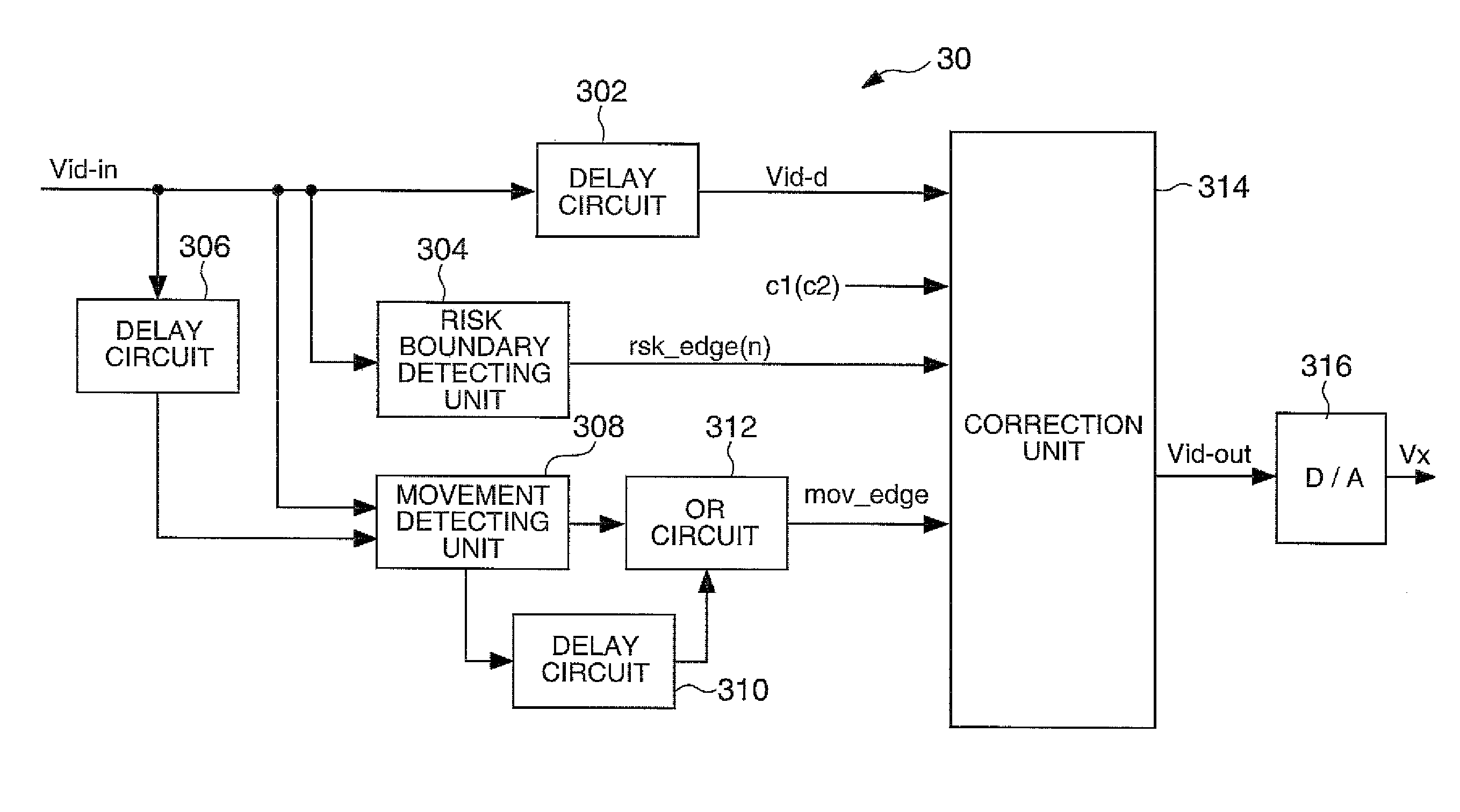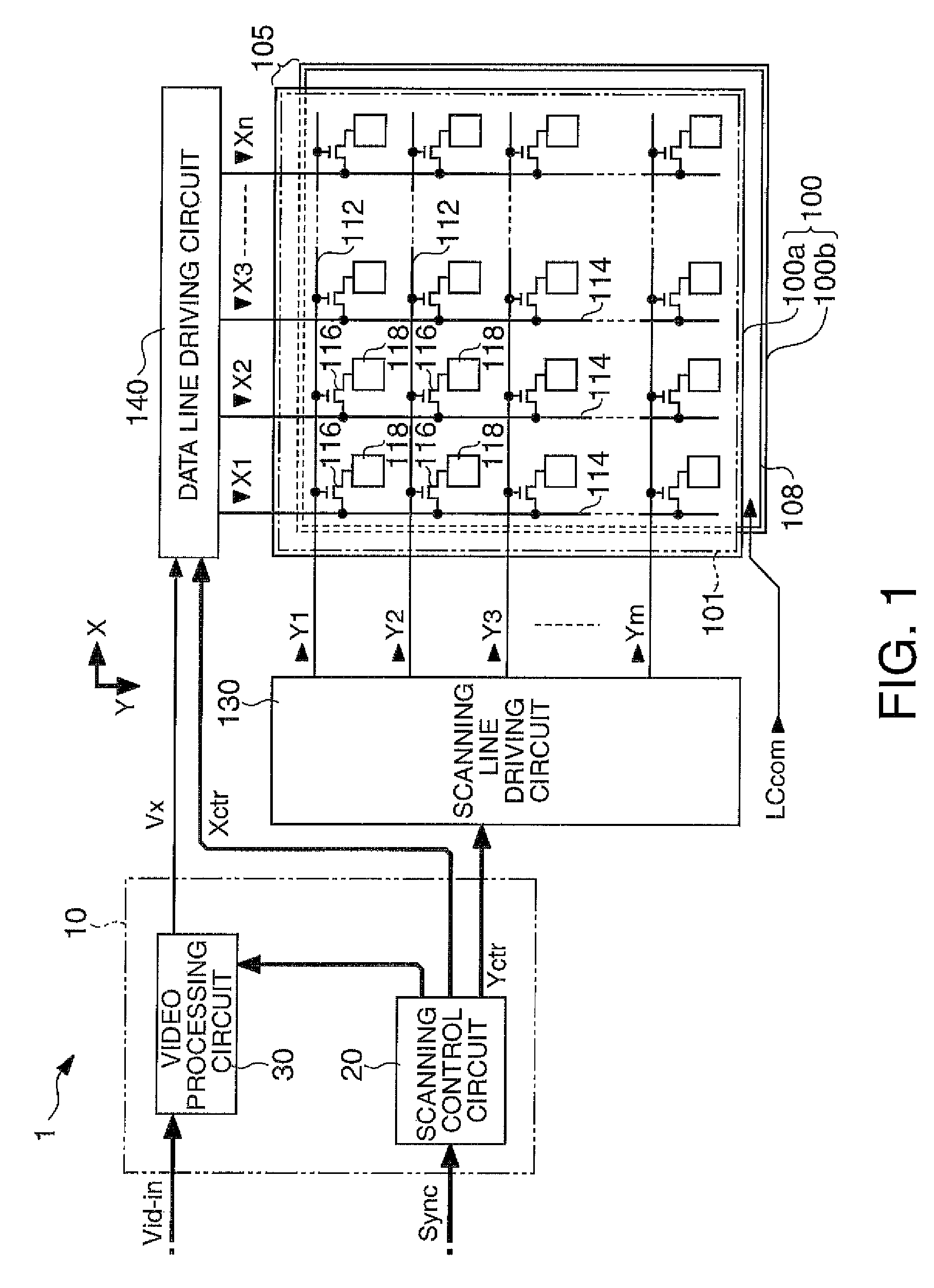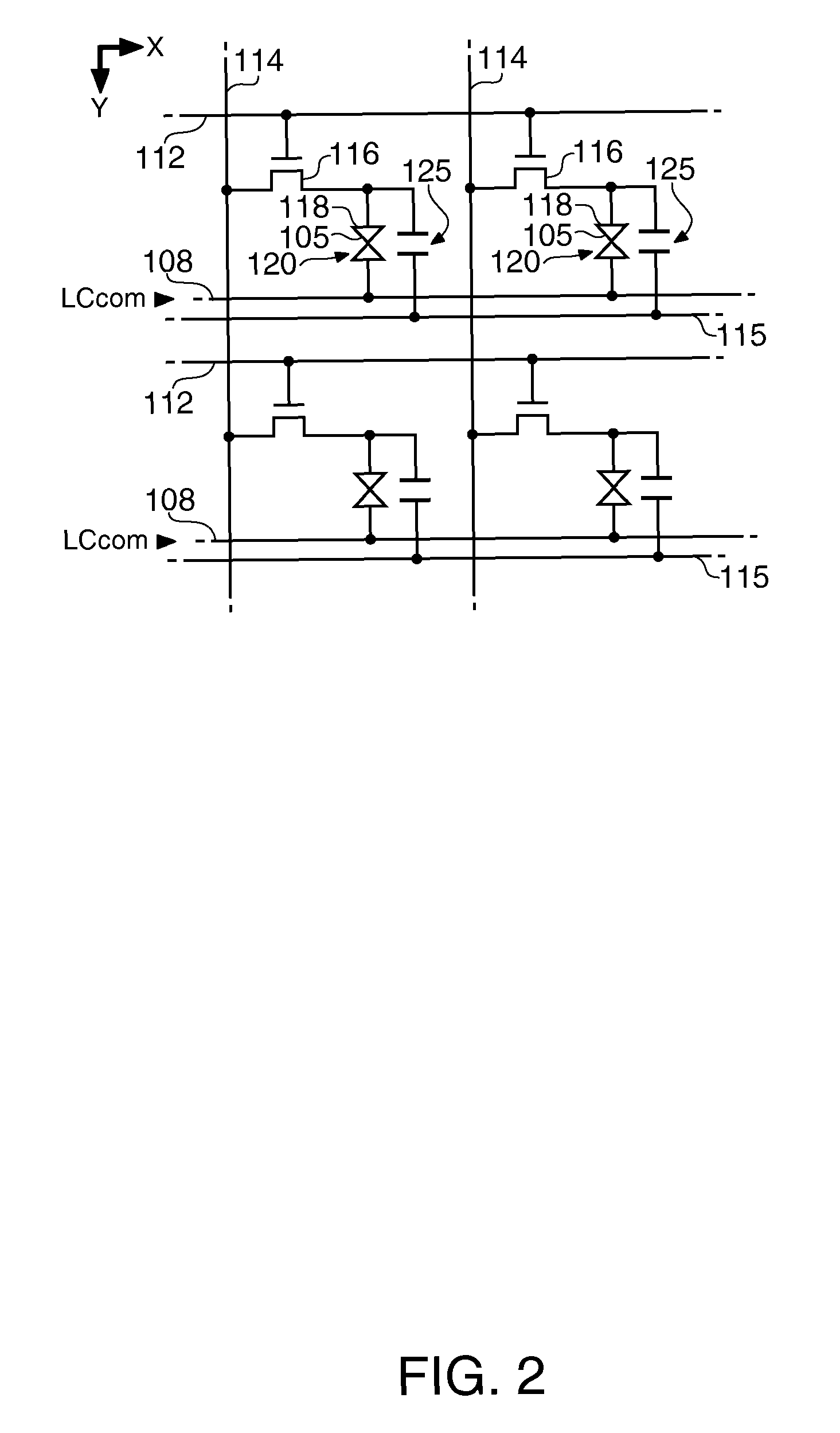Liquid crystal pixel correction using pixel boundary detection
boundary detection technology, applied in the field of liquid crystal pixel correction using pixel boundary detection, can solve the problems of display defect, difficult to apply the technique to a liquid crystal panel that has already been manufactured without taking
- Summary
- Abstract
- Description
- Claims
- Application Information
AI Technical Summary
Benefits of technology
Problems solved by technology
Method used
Image
Examples
first embodiment
[0054]Hereinafter, embodiments of the invention will be described with reference to the accompanying drawings.
[0055]First, a first embodiment of the invention will be described.
[0056]FIG. 1 is a block diagram showing the entire configuration of a liquid crystal display device 1 to which a video processing circuit according to this embodiment of the invention is applied.
[0057]As shown in FIG. 1, a liquid crystal display device 1 includes a control circuit 10, a liquid crystal panel 100, a scanning line driving circuit 130, and a data line driving circuit 140. A video signal Vid-in is supplied to the control circuit 10 from a higher-level device in synchronization with a synchronization signal Sync. The video signal Vid-in is digital data that designates a gray scale level of each pixel in the liquid crystal panel 100 and is supplied in the scanning order based on a vertical scanning signal, a horizontal scanning signal and a dot clock signal (not shown in the figure) that are include...
second embodiment
[0175]Next, a second embodiment of the invention will be described. Further in this embodiment, the description will be presented on the premise of a normally black mode. This applies the same to each embodiment described below unless otherwise described. In addition, in the description presented below, the same reference numeral is assigned to the same configuration as that of the first embodiment, and the detailed description thereof will be appropriately omitted. In the above-described first embodiment, the video processing circuit 30 corrects only the dark pixels satisfying the correction condition to the gray scale level c1. However, in this embodiment, two or more dark pixels that are consecutive from a dark pixel, which is brought into contact with a risk boundary, to the opposite side of the risk boundary are also set as the correction targets that are corrected to the gray scale level c1.
[0176]As above, a difference between a video processing circuit 30 according to this em...
third embodiment
[0185]Next, a third embodiment of the invention will be described.
[0186]In this embodiment, in the configuration according to the first embodiment, instead of dark pixels satisfying the correction condition, the video signals of bright pixels satisfying the correction condition are corrected. In this embodiment, correction of dark pixels is not performed. Accordingly, in this embodiment, instead of raising the gray scale levels of dark pixels so as to suppress “(3) the state in which the liquid crystal molecules in the pixels, which are changed to bright pixels in frame n, are unstable in frame (n−1) that is one frame before” described above, the lateral direction electric field is suppressed focusing on the condition that “(1) when frame n is considered, a dark pixel and a bright pixel are adjacent to each other, in other words, a pixel to which a low voltage is applied and a pixel to which a high voltage is applied are adjacent to each other, and the lateral direction electric fie...
PUM
 Login to View More
Login to View More Abstract
Description
Claims
Application Information
 Login to View More
Login to View More - R&D
- Intellectual Property
- Life Sciences
- Materials
- Tech Scout
- Unparalleled Data Quality
- Higher Quality Content
- 60% Fewer Hallucinations
Browse by: Latest US Patents, China's latest patents, Technical Efficacy Thesaurus, Application Domain, Technology Topic, Popular Technical Reports.
© 2025 PatSnap. All rights reserved.Legal|Privacy policy|Modern Slavery Act Transparency Statement|Sitemap|About US| Contact US: help@patsnap.com



